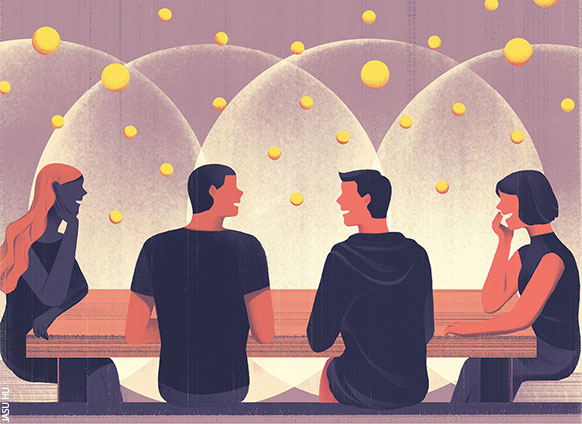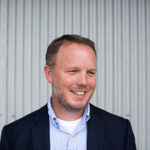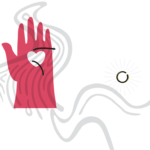On Jan. 14, 2016, I was in a bar in a small, salty town along the South Carolina coast when I happened to strike up a conversation with a man who owns a kazoo factory. “We keep the world humming” is the business slogan that will put his kids through college.
And this chance meeting occurred only about an hour after I ran into an older couple who, some years back, happened to live down the street from me, a connection that made us all go, “Wow!”
And that chance meeting occurred only about an hour after I happened upon a hostess at the best restaurant in town, who happened to have the best table available, in a window that happened to have a stunning view of the sunset over the river.
All of these people eventually asked me what I did for a living, and when I told them I was there to write a travel story about their town for a magazine, they smiled slyly and said, “Oh, really?” It wasn’t until the kazoo factory owner, who happened to be a city councilman, started buying me Jell-O shots that I suspected something was up. By then I’d already had too much fun to care.
Later I traced the happenstances to a single source. On my way into town earlier that day, I’d stopped by the local visitors’ center to pick up a map and tickets for a horse-drawn carriage history tour. While a draft horse named Bob guided me through the live oaks and lines of 18th century homes, someone from the visitors’ center called someone who called someone who called someone else. By that night I had a lot of friends. These were kind and generous people by nature, to be sure, but our connection had been contrived around their motivation to convince me to write a nice story about them and their town. Which I did. Because, well, how can you not be impressed by that?
The only real coincidence of the trip is that it transpired during a period of personal turmoil over real and imagined friendships. I’m the editor of the city magazine in Charlotte, North Carolina, and each day I receive dozens, sometimes hundreds, of emails from people who would like something from me—at the very least a response. One minute I’ll help a freelance writer through a story about a cold case mystery, the next I’ll respond to an invite to a new jewelry store opening, and the next I’ll answer a message from corporate about budgets and expenses. Being an editor is less about editing than communicating.
The first realization that things were out of balance, though, came a couple weeks before the trip, on the last night of 2015, when all of those emails and all of that work on connections added up to a 36-year-old man sitting at home on New Year’s Eve listening to twangy records by himself. The second realization came earlier that day in South Carolina, Jan. 14, when I was talking to an old friend on the phone and said something that made me choke.
“I spend all day responding to people at work. And by the time I get home I don’t feel like responding to people who matter most. I mean, my dad called last week, and I let it go to voice mail. I still haven’t called him back. Isn’t that messed up?”
If I was looking for an “Oh, Mike, it’s OK,” this was the wrong friend.
“Yeah,” she said. “That’s messed up. No, wait, that’s really messed up.”
And then I stumbled into the script with Bob the Horse and the kazoos and Jell-O shots. But two nights later, on Jan. 16, I went to a concert with a new friend, a brown-eyed woman with a purifying laugh I’d met about a month earlier.
Her name was Laura, and the band was an up-tempo husband-and-wife duo named Shovels & Rope. The show was impressive enough that I bought a concert poster on our way out the door—just in case, I told myself—and then we spent the night walking around the city talking. The year that followed was full of good nights with good music and good food and her.
But here came the holidays again in late 2016, and here came the home-wrecking editors from the very magazine you now hold in your hands, asking me to take part in an experiment that would jeopardize the whole thing. They sent me a quote that’s popular among personal development authors and speakers: “You are the average of the five people you spend the most time with.” I was told to study it as it applies to my life, and describe to you the process of getting rid of people who weren’t helping me achieve my goals or happiness. The idea was to improve myself. Any sour ingredients had to go.
Related: How to Deal With the Negative Influences in Your Life
For 30 days, starting on Dec. 17, 2016, and ending on Jan. 16, 2017, I kept a spreadsheet that accounted for every hour. If a person was with me for the majority of an hour (phone calls counted), I typed his or her name into the corresponding box on the spreadsheet. For the hours I spent sleeping, I typed “sleep.” For the hours I spent with Laura, I typed “Laura.”
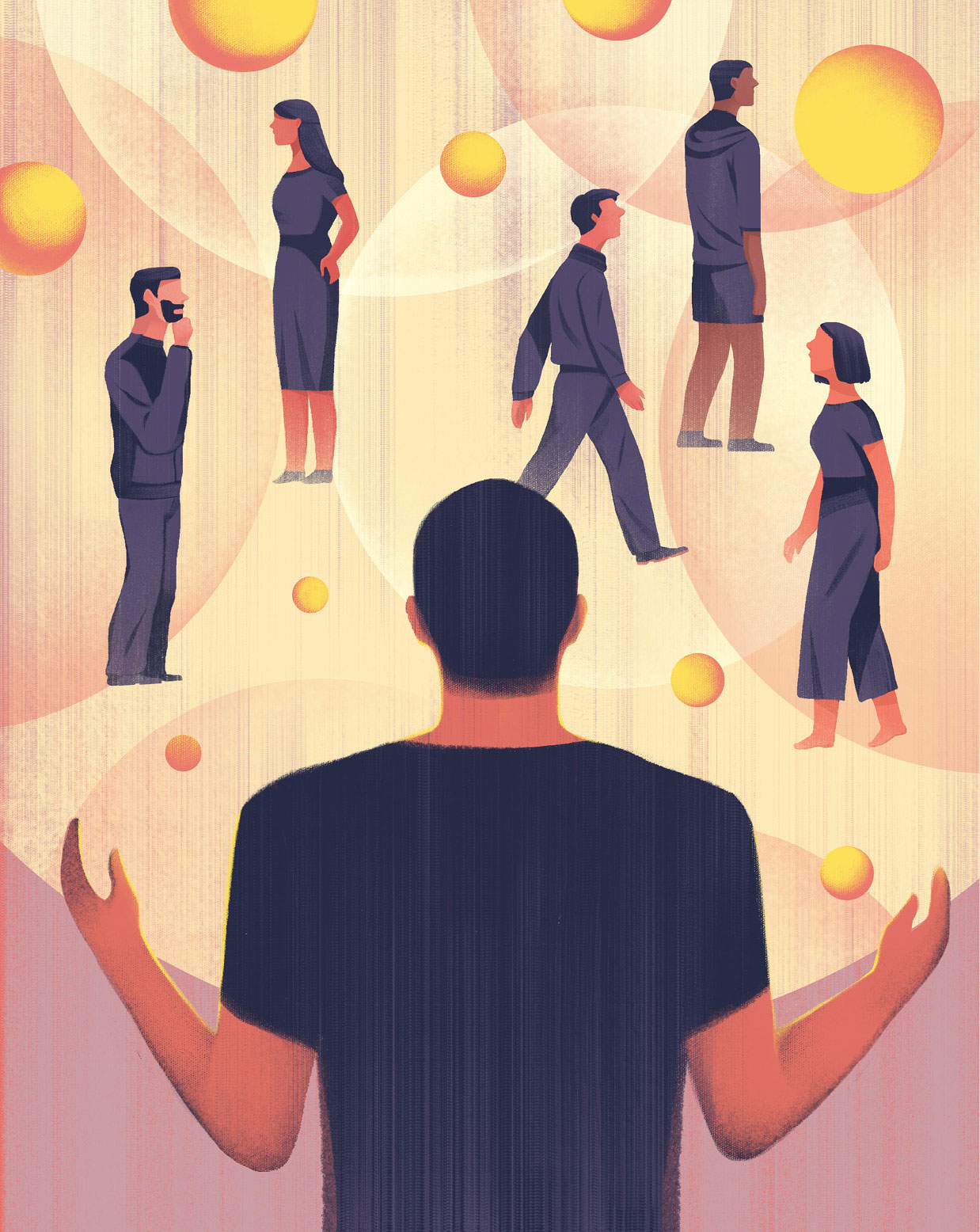
JASU HU
On Jan. 16, the one-year anniversary of that concert, I tallied the results. Then I considered whether I needed to make any changes in the group of people closest to me.
Messed up, right?
***
There are 720 hours in 30 days. I slept for 216 of them. In the remaining 504 hours, I had arguments and smiles, surprises and total boredom, family and friends, and, this being the holidays, far too much to eat and drink. The people in my “top five,” the people who average out to me, were my girlfriend, two co-workers and my parents.
My brother, Kenny, was sixth, and this was a glaring statistic in the post-study analysis. I’d argue that Kenny is more a part of me than anyone on the list, and, despite being two years younger than I am, he’s someone I look up to. He’s a project manager for a construction company, overseeing a staff of hundreds that builds massive structures in the Washington metro area. Also not included in the list of five is my childhood best friend, Joey, whose son is my godson, and whose list of admirable descriptions includes being a nuclear engineer and commander in the U.S. Navy. Also left out are my writer friends, scattered around the country, who feel like family every time we get together.
Maybe I should give this a shot. Maybe I can cut someone. It can’t be that hard, right?
Clearly, if we are the sum of only five, I needed to figure out a way to move some of these folks into the mix. But who, then, would go? And how to achieve their exile?
This would require ruthlessness, a trait I’ve longed to possess. I’d have to look for it in one of the five people who average out to me, and then I’d need to ask for an extra dose of it to get rid of the person who was kind enough to donate ruthlessness.
This experiment was going to hell.
It was working in the sense that it’s another reminder to call someone you haven’t talked to in awhile. But it failed in the sense that it treats people like data points in an average, and at a time when everybody’s out to reduce us to a data point, seriously, we shouldn’t treat our friends and family that way.
I read other stories that examined the “you’re the average of five” quote, which can be traced back to the late, legendary speaker and businessman Jim Rohn. I found one story, written by a highly motivated young man, positing that his two closest friends are also his business partners. After I read it I imagined these three All-American Startup Boys dreaming up new apps that sell millions overnight while Pappy Van Winkle reps call to ask them how many bottles they’d like tonight, sirs.
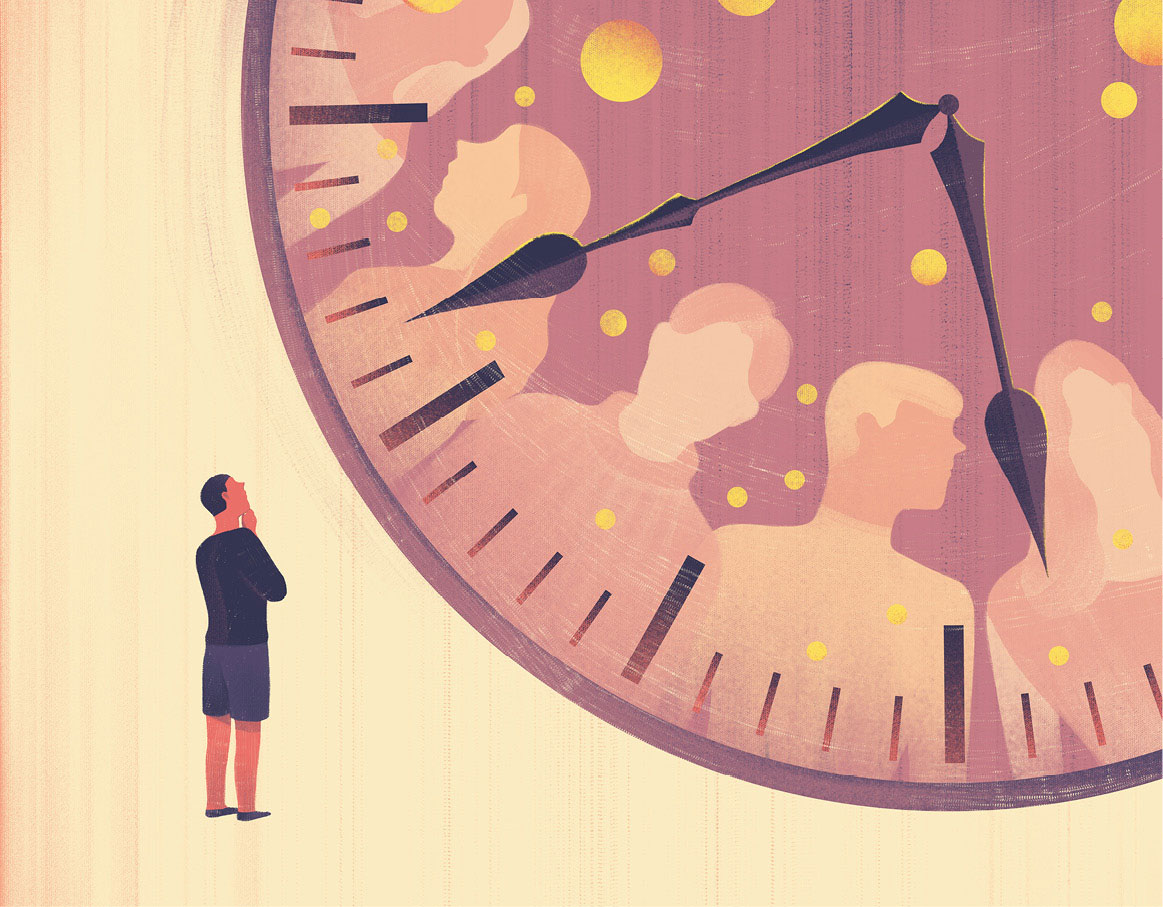
JASU HU
The difficulty with being a writer is that most of us don’t get into this business to make money, but for other altogether useless reasons like “trying to understand the world around us.” It’s hard to build a business plan for a publication titled Just Figuring It Out Here, Folks, so we writers seek work from publications of other names—let’s say SUCCESS—and in order to keep the bosses happy we try to live up to that reputation. But last year, in my first assignment for this magazine, these same editors sent me out to hike a difficult trail in the mountains, and about halfway through I almost died so I turned around and went home and wrote a story about falling short. Now here I am again, realizing I don’t have the courage to start erasing people from my life, standing on the verge of being SUCCESS magazine’s failure columnist. Maybe I should give this a shot. Maybe I can cut someone. It can’t be that hard, right?
Let’s look at the candidates.
My Mother
Time spent with her: 56 hours, 11 percent of waking hours over 30 days
Positives: Smart woman. Has a master’s degree from George Washington University. Raised me. Nobody reads Corduroy out loud like she does. Nope, not even your mom. She helped raise her younger siblings, too, after her mother was killed in a botched robbery while walking home from the grocery store when Mom was 18. She went on to teach for 40 years—first-graders—and retired in 2014 to look after her husband, my father, after his strokes. She’s now his full-time caregiver. When he eats, she cuts his food. When he goes to the bathroom, she’s right there with him. She drinks a Miller Lite or two at night. She curses softly when the Washington Redskins lose. She taught me things about tolerance and kindness and that Friday nights are pizza nights. We spent three days around the Christmas holiday together. Kenny and I took Dad out of the house so she could have time to herself. On my birthday, the day after Christmas, she bought me a crab cake, a real one with none of that filling nonsense, my favorite food. She is, as your average social media post goes, the best.
Negatives: Thirty years ago she didn’t buy me a Nintendo game when I really wanted it. That’s all I have. Let’s move on.
My Father
Time spent with him: 61 hours, 12 percent of waking hours
Positives: Tough SOB. Raised me, too. He grew up in a house with an abusive father and used his knuckles to keep the old man from beating on his eight brothers and sisters. He jumped out of an airplane 1,120 times as a sport parachutist. In his 20s, he took a solo trip to Iceland and Germany. He was snapping photos in Iceland when an older man tapped him on the shoulder and said, “Take pictures with your mind, son. They’ll last longer.” Never has that advice been more beneficial than now, after Dad’s strokes cost him his short-term memory but somehow left him with those images from years ago. He can remember the 1960s and the 1970s with greater clarity than he can remember yesterday. Take pictures with your mind.
Negatives: Sometimes he wants to say words, but he can’t get them out, so he gives up and flips me the middle finger. No, wait, that’s pretty funny. Let’s move on.
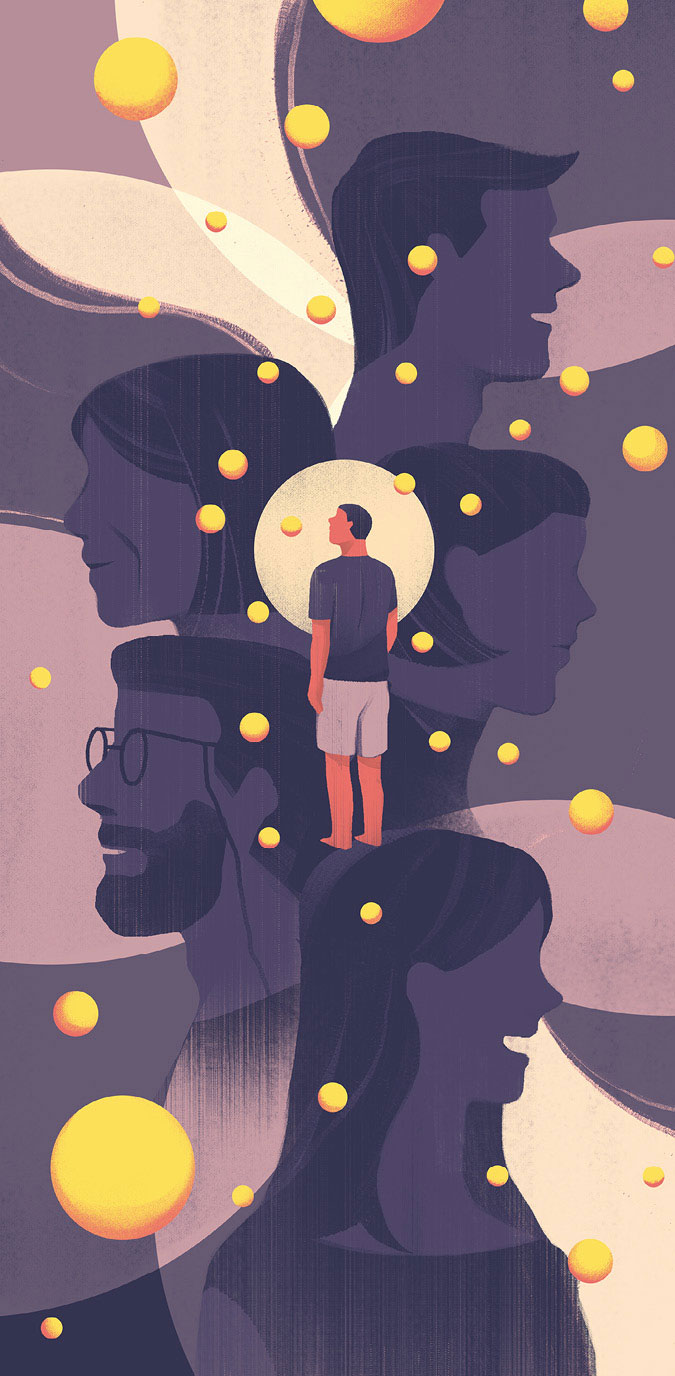
JASU HU
Adam
Time spent with him: 61 hours, 12 percent of waking hours
Positives: Curious, light-hearted, witty. Drives an Audi. Lives in one of those cool urban apartments with the rooftop patio where you can see the sun set over the skyline. Hiring Adam as the associate editor at Charlotte magazine was one of the best decisions I’ve made as a boss (another is next on the list). He’s a former television reporter, and in spite of that he’s become one of the most promising young writers in the country. In September, when a police shooting led to riots and tear gas and broken windows and a murder in the heart of Charlotte, Adam ran toward it all. It’s my job to help him grow—which means he creates work that makes our magazine better, which makes me better.
Negatives: He’s seven years younger than I am and far more handsome and better dressed and parks his spit-shined Audi next to my decade-old truck in the work parking lot. Let’s move on.
Kristen
Time spent with her: 64 hours, 13 percent of waking hours
Positives: Never stops going. Says the strangest things. Stuff like, “If I had a party for WrestleMania Sunday, would you come?” The senior editor at Charlotte magazine, she’s 28, dynamic, and flashes back and forth across the workday sky. People like Kristen—earnest to a fault, driven to participate in things like pit bull rescue foundations, filling their days with meetings and work and friendships—are the future of my business and many businesses. More than that, she and her husband, Jon, have become friends of mine. He gets us Carolina Panthers tickets from his work, and if that’s not enough to keep her in the top five, I guess there’s this: They introduced me to Laura, in December 2015, at a charity pancake breakfast.
Negatives: Managing Kristen is like trying to manage rock ’n’ roll. You can’t, but you trust the result will be good. Let’s move on.
Laura
Time spent with her: 310 hours, 62 percent of waking hours
Positives: Made my throat tickle when I walked upstairs and saw her at that pancake breakfast. When I try to make her laugh, she actually laughs. She’s quiet and thoughtful and passionate and funny.
Negatives: Let’s move on.
***
When I went to that concert with Laura, we were just friends. It was held in Charleston, South Carolina, the band’s hometown and sort of on my way home from the travel assignment. Laura drove three hours from Charlotte to meet me there. Shovels & Rope opened with a new song, one that neither of us had heard. It’s called “St. Anne’s Parade,” and it includes the line “I need more fingers to count the ones I love.” That kind of line will do things to the heart on a first date, or kind of a first date. It’ll make you want to buy a poster, just in case. It’ll also serve honorably later as a tool for a hack writer to describe the absurdity of this “average of five” business.
Laura was a constant data point from that night forward.
About a week into this experiment, on Dec. 30, 2016, Laura and I had plans to meet two friends, Jen and Jim, for drinks and then dinner. When we got to the restaurant, I spotted Jen and Jim standing at the bar. We hugged and ordered beers, and I turned around to look for a place to sit. Rather than a nice table for four, my eyes found 10 of my closest friends in Charlotte. I blinked, looked down, and looked up again. My eyes welled up with tears.
“Look,” Laura said. “It’s all people who know Mike Graff. How about that?”
Related: The Value of Friendship
And that’s the story of the first surprise birthday party I’ve ever had, a few days after I turned 37 and one day shy of a year after I spent New Year’s alone with the twangy records.
“It’s the modern paradox. We’re increasingly super-connected, but also disconnected.”
***
On the second-to-last day of the experiment—this would’ve been Sunday, Jan. 15, 2017—I was at my desk writing down thoughts for this story when Laura asked me to join her for Sunday lunch with her family. Sunday lunch is one of the best things about living in the South, but who has time anymore? I usually turn it down in favor of working, and often that means drafting responses to emails to send when I get to work on Monday.
In 1999 Edward Hallowell, M.D., wrote a book called Connect in which he described the rise of the internet and the web, and how they were changing the way we connected. “What makes life so hard now is precisely what is making it so easy,” Hallowell wrote 18 years ago. “The challenge of today’s world is this: how do we hold on to both the cellphone and the day of rest? We have to figure out how to hold on to the technology and the human moment.”
Hallowell laughed when I called him in January to remind him of that quote.
“We’re living in an age in which connection is really jeopardized,” he told me. “It’s the modern paradox. We’re increasingly super-connected, but also disconnected.”
Here’s something I didn’t mention in my list of my five data points earlier: When I counted all of the Slack messages, work emails, personal emails, text messages and social media interactions, I came to the sobering sum. Over the course of 30 days—a relatively slow 30 days, due to the holidays—I had 5,683 digital connections.
Cutting back is good. But not when it comes to people.
That’s 11.3 per waking hour. Each one a moment of pause. Each one a moment when I wasn’t interacting with someone in person.
Hallowell is 67 now and working on studies about attention deficit disorder. He remains an optimist and believes humans are working to fight their addiction to their phones.
“Wise people are heeding it,” he says. “They’re deepening their connections. They’re taking it seriously. It’s the key to everything that’s good to life, connections. And isn’t it nice that it’s by-and-large free?”
Also free: Laura’s aunt’s barbecue chicken. When Laura asked me whether I wanted to join for Sunday lunch, my first reaction was to say I couldn’t break away from the computer. But it struck me that if I couldn’t break away from the computer when I was writing a story about improving my connections, I’d never break away from the computer.
Related: How to Build Good Relationships
A beagle greeted us at the door. Laura’s aunt and uncle had just rescued him a few weeks before, and he was terrified of new people. The poor thing jumped on the couch and sat on his back legs and stared at me, his front legs shivering like his paws were stuck in ice.
“Was he abused?” I asked.
“Don’t know,” Laura’s uncle said. “Don’t know what kind of people he’s been around.”
***
A kazoo won’t make a sound if you just blow into it. You have to hum, like you’re singing. The vibrations from your vocal cords make the sound.
It isn’t a beautiful sound. It wouldn’t fit with pop music, and it would ruin a soulful R&B song, and true rock ’n’ roll would drown it out. But just because the kazoo isn’t the sexiest member of the band doesn’t mean it’s less interesting.
I went into this month thinking that I’d need to cut people out of my close circle to make a better me. There’s a movement sweeping the nation now urging us to get rid of things to achieve happiness. We have tiny houses and lines at the Goodwill drop-offs. In December, Netflix released Minimalism: A Documentary About the Important Things. Laura and I watched the film, and within minutes, we stuffed two bags with things to get rid of.
Cutting back is good. But not when it comes to people. In Connect, Hallowell noted a study from the Journal of the American Medical Association that involved injecting 276 volunteers with viruses known to cause the common cold. Turns out, people who had six or more social ties were four times as likely to fight off the cold as those who had four social ties or fewer.
Only in toxic cases are we adding to our lives—or the average of people who make us—by subtracting people.
“Cultivate lilies and forget leeches,” Hallowell told me on the phone. Why not strive for a thousand lilies?
I’ve spent more than 720 hours thinking about this now, so I think I’m qualified to say that you’re better off seeing yourself not as the average of some of the people you know, but as the sum of the best qualities of all of the people you know.
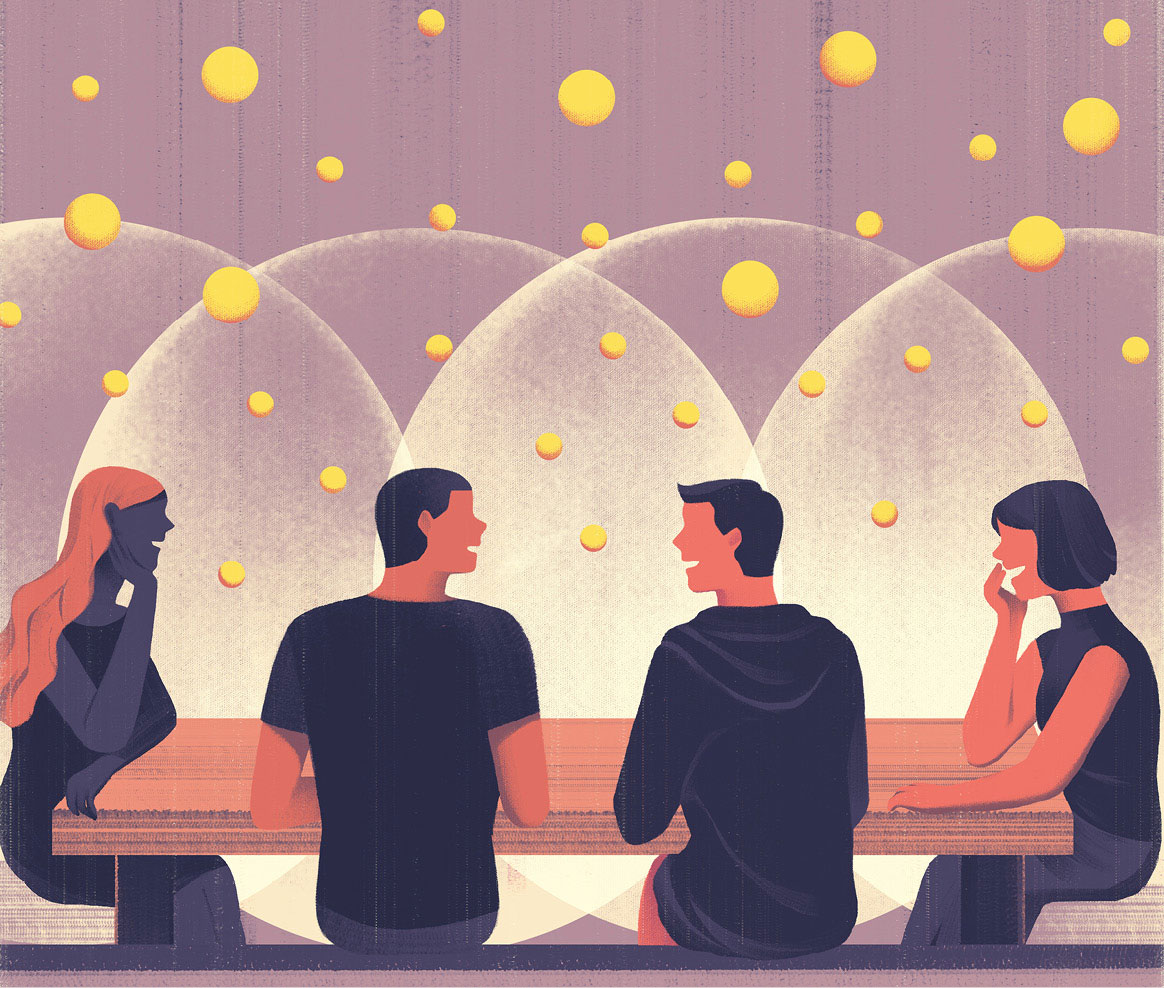
JASU HU
Consider the people closest to me and the descriptions I previously gave: If I take Kristen’s fire and Adam’s cool and Joey’s engineering brain and Kenny’s ability to manage and Dad’s advice about taking pictures with your mind and Mom’s relentless devotion and Laura’s thoughtfulness and laughter, and slap them on my chest like post-it notes, I’d be a well-rounded person. I know that.
If I saw them only as walking flaws; if I saw Kristen only as too chaotic and Adam as too hip and Joey as too Republican and Kenny as too stubborn and Dad as too broken and Mom as too worrisome and Laura as too worrisome—stop it, that’s another essay—I’d be a walking flaw myself.
What if I had written off that cast of characters in that salty South Carolina town when I learned that they already knew who I was? What if I hadn’t left there laughing about the idea of real and imagined coincidences, and what if I hadn’t taken that phone call from Laura to say she was driving down to meet me at that concert a few nights later, and what if we hadn’t been there to hear that line, “I need more fingers to count the ones I love”?
I don’t know the answer to those questions, but I know that Laura and I are still soaring, the magazine I edit is soaring, too, and I just had the most profitable year of my professional career. Yes, somehow, spending more time caring about more people in deeper ways made me more productive.
***
In the final hours of the 30-day experiment, I had lunch with Tommy, a friend and fellow writer. I hadn’t seen him in a couple of months even though we live less than a mile from each other.
Over Greek food on a cloudy Monday, we talked about projects we were working on and projects we wanted to work on. We talked about a magazine-writing class he was teaching at a nearby university. We talked about people we knew and stories we’d read. In the course of the 90-minute lunch, I imagine our conversation touched on a couple of dozen people who weren’t there.
We paid the bill and stood up to leave when I recognized a family standing in the front doorway. In walked Michael, another writer friend, with his wife, Lauren, and their two girls. Michael’s eyes were tired from chasing around not just his children, but also the president-elect. He writes about national politics for a living. The job puts him on the road a lot, but he made sure to be home on this Monday before the inauguration. It was Lauren’s birthday.
Michael and Lauren invited us to sit with them for lunch. I had work to do, and the thought of staying another hour worried me. But the experiment was coming to a close, and these were good people. So I stayed, Tommy and Michael and Lauren, and the two girls and me. We talked about everything from presents, to family, to politics, to Asian food, to play dates for the girls. And that was the last of those 720 hours, six of us around a table, and not one too many.
Related: 8 Traits of Healthy Relationships
This article originally appeared in the May 2017 issue of SUCCESS magazine.



